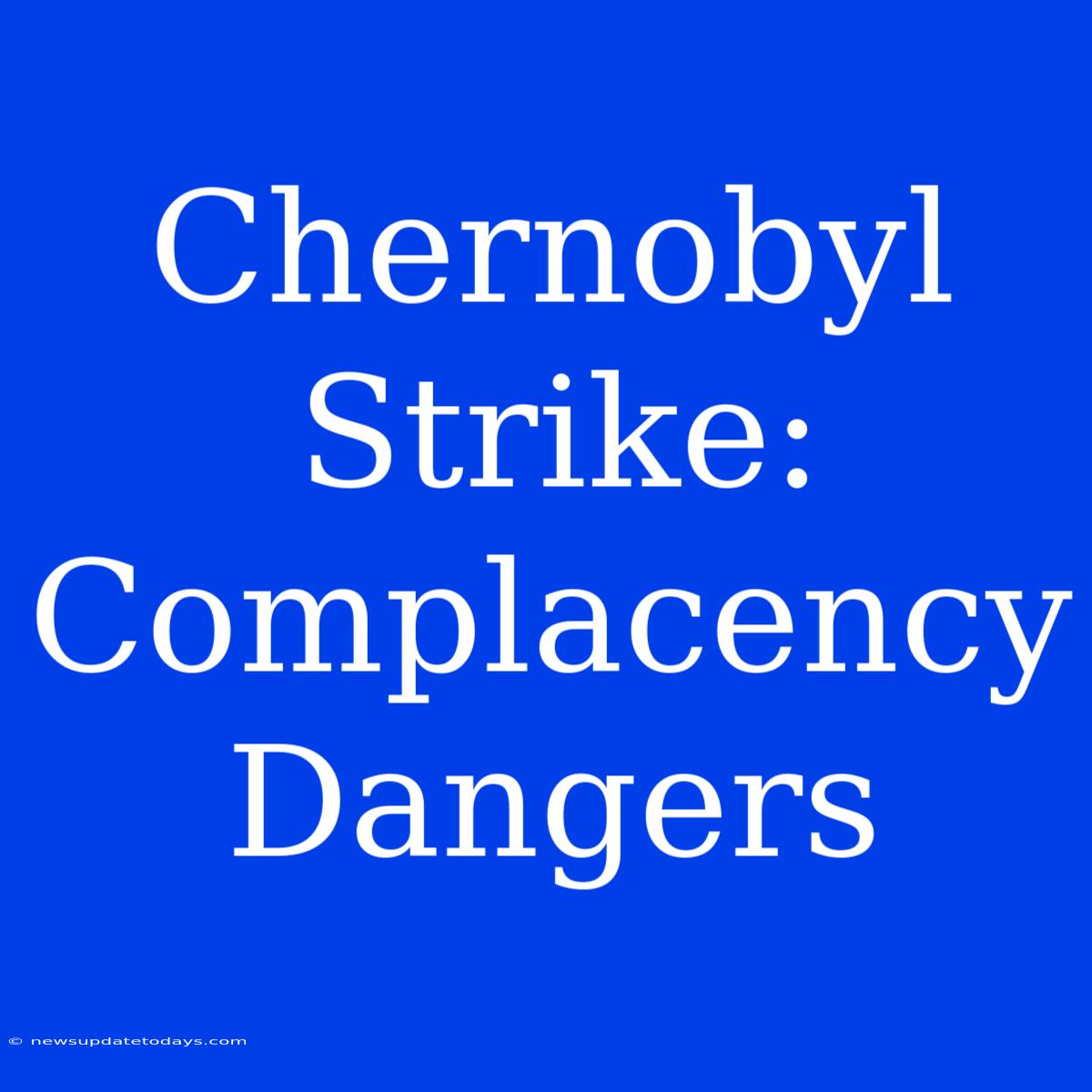Chernobyl Strike: The Peril of Complacency
The Chernobyl disaster wasn't just a catastrophic event; it was a stark warning about the dangers of complacency in high-risk environments. Thirty-seven years later, its lessons remain tragically relevant, echoing across various industries and aspects of life. This article delves into the root causes of the Chernobyl accident, highlighting the insidious nature of complacency and its devastating consequences. We'll explore how complacency manifests, its impact, and crucially, how we can mitigate its risks.
The Chernobyl Accident: A Case Study in Complacency
The Chernobyl disaster, a catastrophic nuclear accident in Pripyat, Ukraine, wasn't caused by a single malfunction. Instead, it was a confluence of factors, many stemming from a culture of complacency:
-
Inadequate Safety Procedures: The safety procedures were insufficient and poorly enforced. Operators were encouraged to prioritize production over safety, leading to risky shortcuts and overlooking potential hazards. A critical safety test was conducted in a manner that disregarded established protocols.
-
Lack of Transparency and Communication: Information about potential risks was not effectively communicated across different levels of the organization. Fear of repercussions discouraged staff from reporting concerns, creating a culture of silence that exacerbated existing problems.
-
Overconfidence and Underestimation of Risk: The operators, and the broader organization, exhibited an overconfidence in their abilities and underestimated the potential consequences of their actions. This overconfidence blinded them to the inherent dangers of the reactor design and operational procedures.
-
Inadequate Training and Supervision: The operators lacked the comprehensive training needed to handle the complexities of the reactor system. Supervisory oversight was insufficient, allowing deviations from safety protocols to occur without intervention.
These factors, rooted in complacency, contributed to a catastrophic chain of events culminating in the meltdown.
Complacency: A Silent Killer
Complacency isn't a sudden, dramatic event; it’s a gradual erosion of vigilance, a subtle shift in mindset that allows risks to fester and grow. It manifests in different ways:
-
Routine and Familiarity: When tasks become routine, the sense of danger diminishes. This familiarity breeds complacency, leading to shortcuts and overlooking potential hazards.
-
Overconfidence: A false sense of security, often fueled by past successes, can lead to risky behavior and a disregard for safety measures.
-
Lack of Awareness: A lack of awareness of potential risks, or an underestimation of their severity, can leave individuals and organizations vulnerable.
-
Poor Communication: Ineffective communication prevents the timely identification and mitigation of risks.
Mitigating the Risks of Complacency
Combating complacency requires a proactive and multi-faceted approach:
-
Robust Safety Procedures: Implementing clear, comprehensive, and consistently enforced safety procedures is paramount.
-
Open Communication Channels: Creating a culture of open communication, where individuals feel comfortable reporting concerns without fear of reprisal, is essential.
-
Continuous Training and Development: Regular training and refresher courses ensure that employees remain aware of potential risks and updated on best practices.
-
Regular Risk Assessments: Conducting regular risk assessments identifies potential hazards and allows for proactive mitigation strategies.
-
Strong Leadership and Accountability: Strong leadership that prioritizes safety and holds individuals accountable for adhering to safety procedures is critical.
The Chernobyl disaster serves as a potent reminder of the devastating consequences of complacency. By understanding its insidious nature and implementing preventative measures, we can create safer environments across industries and prevent future tragedies. The legacy of Chernobyl should not be simply a remembrance of a past catastrophe, but a constant call for vigilance and a commitment to safety above all else.

